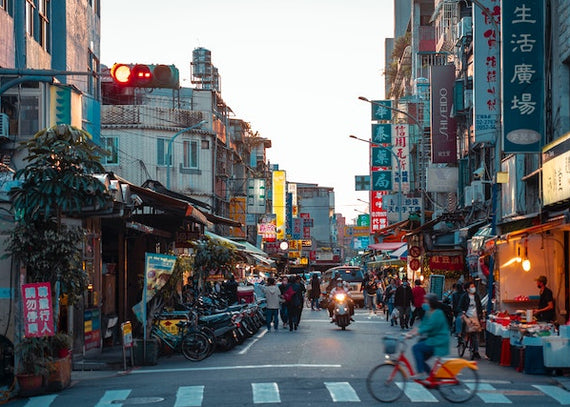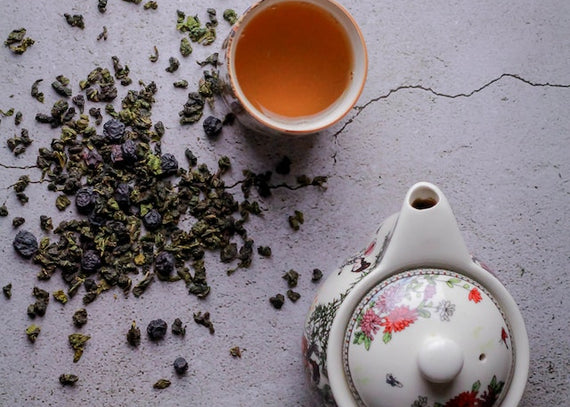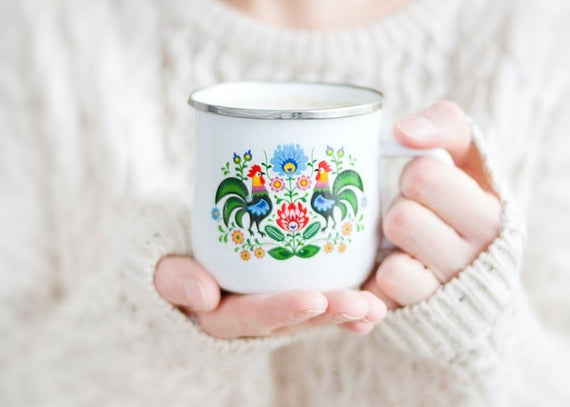What is Bai Mu Dan (Peony White) tea?
Peony White tea, also known as Bai Mu Dan, is a variety of white tea that originated in China in the 1870s. Like the famous Silver Needle white tea (Baihao Yinzhen), which is made only from young tea buds, Peony White tea uses the "SanBai" - a young bud and two of its nearest leaves.
Right below the Silver Needle variety, Bai Mu Dan is seen as the second highest quality white tea on the market and is, therefore, a more affordable alternative. It is also sometimes preferred by tea drinkers due to its full-bodied flavor and greater potency than Silver Needle tea.
Bai Mu Dan white tea can be categorized based on where it comes from into Fuding and Zhonghe varieties.
White tea from Fuding dates back to the Tang Dynasty, and the region is known as the home of white tea. Peony White tea grown here is typically dried for longer than the Zhenghe variety, creating darker leaves and usually brewing into a light green hue.
Peony White tea from Zhenghe has a more full-bodied and sweeter flavor than Fuding white tea. In addition, it offers nutty and smoky hints, more potent than most traditional white teas. Similarly to pu-erh tea, this darker white tea can be aged to bring out more nuanced flavor profiles.
It is also worth noting that Peony White tea is known for its health benefits. It contains over 30% more polyphenols than other white teas, although less than Silver Needle tea. Catechins and flavone, found in polyphenols, give Peony White tea anti-oxidant properties.
Production of the Peony White tea
White Peony tea was first produced in the town of Shuiji in Fujian, China, in the late 1870s by local tea farmers. In the 1920s, the popularity of Bai Mu Dan increased as production was extended to Zhenghe county, which soon became the primary tea source in China. Presently, the majority of White Peony tea is manufactured in the counties of Zhenghe, Jianyang, Songxi, and Fuding, all located in the province of Fujian.
Like other white teas, Bai Mu Dan is a non-oxidized tea, harvested in springtime and hand-picked by experts to ensure the highest quality. The workers pick only the youngest buds and two youngest leaves on the plant before they are fully open, using great skill to preserve the leaves' integrity. This gentle approach prevents the leaves from unwanted oxidation, which would compromise the flavor and aroma of the tea.
Once picked, the leaves are spread out on a large bamboo mat and laid to dry in direct sunlight to further prevent oxidation. They dry for 1 to 3 days before being packaged for sale.
While the process of cultivating white tea is relatively simple, the young buds are very delicate and require to be handled gently to avoid damage. Furthermore, if there's frost, rain, or even morning dew, the buds will not be harvested to prevent compromising quality.
Flavor and aroma
Peony White tea has low levels of caffeine and is well-loved for its full-bodied, floral flavor, with mellow hints and a clean aftertaste. Although it doesn't contain peony, Bai Mu Dan tea has a fruity, floral flavor stronger than Silver Needle but not as stringent as Shou Mei tea.
As mentioned above, Peony White tea from Zhenghe has a more potent, sweet flavor than Fuding white tea, boasting nutty and smoky hints and developing a unique aroma as it matures.
Once brewed, Peony White tea has a soft green or bright apricot color, depending on the variety. The leaves tend to unfurl in the cup in a way that resembles peony flowers, justifying the name and further enriching the experience of drinking Bai Mu Dan.
Brewing Method
An important thing to remember when enjoying Peony White tea is the water temperature. Bai Mu Dan should be steeped at low temperatures of 158°F to 176°F (70-80°C). While some varieties can be brewed at slightly higher temperatures, you should keep the water below boiling. You could otherwise lead to the scorching of the delicate white tea leaves and not only remove nutrients but also compromise the flavor of your brew.
If brewing in a cup, use 1 teaspoon of tea for every 8 oz of water – feel free to adjust the amount based on your preferences. Steep the tea for about 2-3 minutes.
Alternatively, you can brew the Peony White tea using the Chinese Gongfu method in a Gaiwan or Yixing pot. Use around 5g of tea, steep it for around 20-30 seconds initially and increase the time by 15 seconds for each successive steeping. Using this method, 5g of Peony White tea should yield around 3-5 steeps with this method, Peony White tea should yield around 3-5 steeps.




